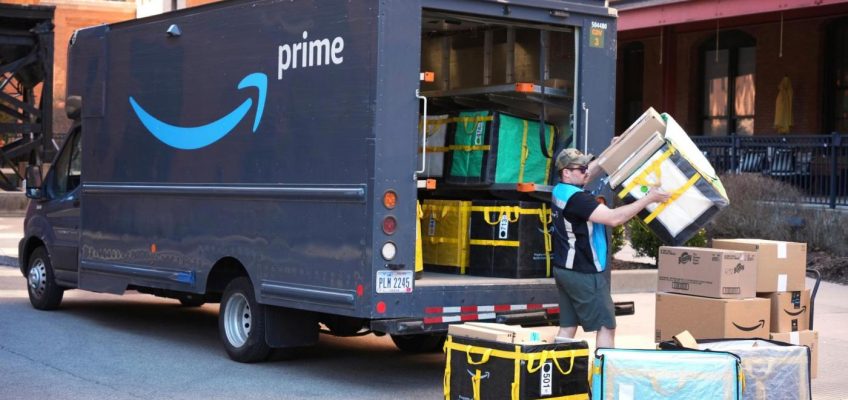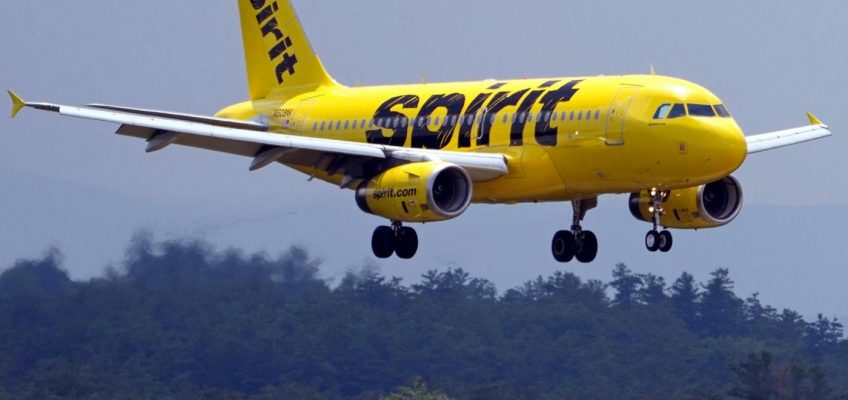By GENE JOHNSON and SALLY HO, Associated Press
SEATTLE (AP) — A federal trial beginning in Amazon’s hometown this week is set to examine whether the online retailing giant tricked customers into signing up for its Prime service and made it difficult to cancel after they did so.
The Federal Trade Commission sued Amazon in U.S. District Court in Seattle two years ago and has alleged more than a decade of legal violations, including of the Restore Online Shoppers’ Confidence Act, a 2010 law designed to help ensure that people know what they’re being charged for online.
Jury selection began Monday, with opening statements to follow.
Related Articles
Seattle, a coffee haven, is watching java prices spike. Why?
Spirit Airlines to furlough 1,800 flight attendants amid second bankruptcy
Compass to buy rival brokerage operator Anywhere Real Estate for about $1.5 billion
Nvidia to invest $100 billion in OpenAI to help expand the ChatGPT maker’s computing power
Community backs Borchert’s Meat Market in Maplewood as it struggles with tax payments
Prime provides subscribers with perks that include faster shipping, video streaming and discounts at Whole Foods for a fee of $139 annually, or $14.99 a month.
It’s a key — and growing — part of Amazon’s business, with more than 200 million members. In its latest quarterly report, the company in July reported more than $12 billion in net revenue for subscription services, which is a 12% increase from the same period last year. That figure includes annual and monthly fees associated with Prime memberships, as well as other subscription services such as its music and e-books platforms.
The company said it does clearly explain Prime’s terms before charging customers, and that it offers simple ways to cancel membership, including by phone, online and by online chat.
“Occasional customer frustrations and mistakes are inevitable — especially for a program as popular as Amazon Prime,” Amazon said in a trial brief filed last week. “Evidence that a small percentage of customers misunderstood Prime enrollment or cancellation does not prove that Amazon violated the law.”
But the FTC said Amazon deliberately made it difficult for customers to purchase an item without also subscribing to Prime. In some cases, consumers were presented with a button to complete their transactions — which didn’t clearly state it would also enroll them in Prime, the agency said.
“Amazon has long known that millions of its customers struggled with enrollment and cancellation of its subscription service, Prime,” the FTC said in its trial brief. “Millions of consumers accidentally enrolled in Prime without knowledge or consent, but Amazon refused to fix this known problem, described internally by employees as an ‘unspoken cancer’ because clarity adjustments would lead to a drop in subscribers.”
Getting out of a subscription was often too complicated, and Amazon leadership slowed or rejected changes that would have made canceling easier, the complaint said.
Internally, Amazon called the process “Iliad,” a reference to the ancient Greek poem about the lengthy siege of Troy during the Trojan war. The process requires the customer to affirm on three pages their desire to cancel membership.
U.S. District Judge John Chun, an appointee of former President Joe Biden, issued an order last week affirming that the Restore Online Customers’ Confidence Act applies to Prime. He also limited some of the legal defenses Amazon may offer at trial and sided with the FTC on its claim that Amazon violated the law by collecting customers’ billing information before disclosing Prime’s terms.
But Chun said several other issues remain for the jury to decide, including whether Amazon’s disclosures of the material terms of Prime membership are “clear and conspicuous” and whether the “Illiad” cancellation method is “simple,” as the law requires.
Chun also ruled that two Amazon executives named as individual defendants — Neil Lindsay and Jamil Ghani — were so entwined with the Prime program that they will personally face liability if the jury sides with the FTC. A third, Russell Grandinetti, could also potentially face personal liability if the jury so decides.
Amazon said a statement Monday: “The bottom line is that neither Amazon nor the individual defendants did anything wrong — we remain confident that the facts will show these executives acted properly and we always put customers first.”
The FTC, which declined to comment Monday, began looking into Amazon’s Prime subscription practices in 2021 during the first Trump administration, but the lawsuit was filed in 2023 under former FTC Chair Lina Khan, an antitrust expert who had been appointed by Biden.
The agency filed the case months before it submitted an antitrust lawsuit against the retail and technology company, accusing it of having monopolistic control over online markets.
In July, Chun admonished Amazon for withholding 70,000 documents from the FTC, including documents improperly marked as containing internal legal advice, saying that conduct was “tantamount to bad faith.”
Meanwhile, like other tech companies, Amazon has been attempting to forge friendlier ties with President Donald Trump, who repeatedly criticized the company during his first term.
In December, Amazon donated $1 million to Trump’s inauguration fund. Amazon founder Jeff Bezos, along with other tech leaders, was also a guest at the inauguration.
Earlier this year, Amazon’s Prime Video service began streaming “The Apprentice,” the long-running TV show that boosted Trump’s profile before he ran for president. The company is also working on a documentary that offers an “unprecedented behind-the-scenes look” into the life of first lady Melania Trump.




